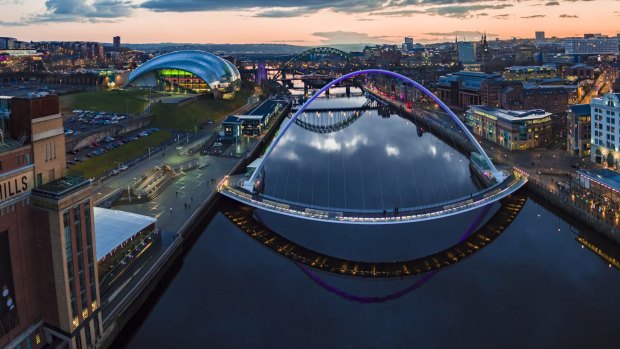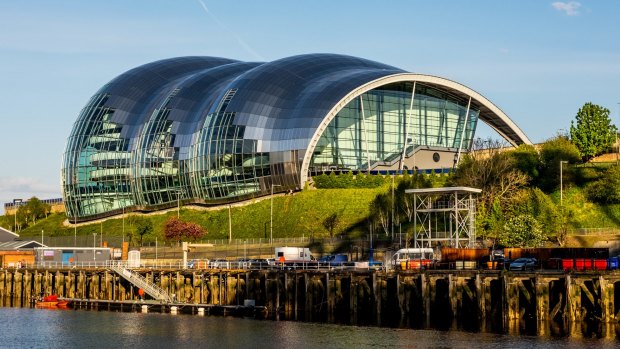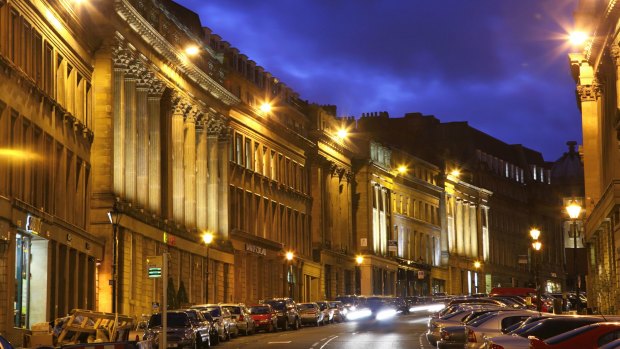This was published 5 years ago
How Newcastle upon Tyne, England, reinvented itself after coal
By Rob McFarland

Once reliant on coal, steel and shipbuilding, Newcastle shifted its economic focus in the 1980s to creative and high-tech industries. Credit: iStock
"People often arrive with interesting perceptions," says Alex Jacobs, my guide from Northern Secrets. "They get here and say, 'Wow, it's in colour' and 'You can actually breathe here'." I guiltily confess to him that I'm one of those people. Growing up in the south of England, I imagined the northern city of Newcastle upon Tyne as a dark, grim industrial powerhouse – a place you visited because you had to, not because you wanted to. Looking around the city today, I realise it's a perception that's at least 30 years out of date.
Once reliant on coal, steel and shipbuilding, Newcastle shifted its economic focus in the 1980s to creative and high-tech industries. It also invested heavily in culture and is now home to some of the UK's most impressive venues, including the Norman Foster-designed Sage Gateshead, a striking concert hall on the banks of the River Tyne, and The Baltic, a former flower mill that's now a five-storey contemporary arts centre. Technically, both are on the Gateshead side of the Tyne but locals rarely differentiate.
The region's remarkable rejuvenation was showcased last year during the Great Exhibition of the North, an 80-day festival that celebrated the pioneering spirit of the people in this part of England. Centred around Newcastle, it was the UK's biggest event in 2018, attracting 3.8 million visitors.

The Norman Foster-designed Sage Gateshead, a striking concert hall on the banks of the River Tyne.Credit: iStock
The Great North Museum was one of the exhibition's hubs, with exhibits on some of the region's success stories, such as Berghaus outdoor clothing from Sunderland and Britain's first astronaut, Helen Sharman, from Sheffield.
"It's all about challenging the perception that the North is all flat caps and whippets," says museum manager Caroline McDonald. Since moving from London to Newcastle two years ago, she hasn't looked back. "My quality of life has gone through the roof."
The most dramatic transformation has occurred along the Quayside, the former commercial dock lining the Tyne in the heart of the city. Fifteen years ago, it was an insalubrious mix of warehouses, light industry and questionable drinking venues. Now, it's an attractive assortment of offices, apartments and exciting new initiatives such as The River Brew Company, a riverside microbrewery and restaurant fashioned from old shipping containers. The area is a delightful place for a stroll, particularly at night when the Sage, The Baltic and the bridges that crisscross the Tyne are all illuminated.

Georgian architecture seen at night-time.Credit: iStock
There are more surprises in the city centre, where Jacobs shows me 16th-century medieval inns and grand boulevards lined with imposing neoclassical buildings. Go shopping on a Saturday afternoon during the football season and you'll be able to hear the cheers from nearby St James' Park, home of Newcastle United. "Football is a religion here," one local tells me.
A 15-minute stroll east from the city centre, Ouseburn Valley is another area experiencing a renaissance. A former industrial quarter full of mills and warehouses, it's now home to The Biscuit Factory, the UK's largest independent commercial art gallery; Seven Stories, a children's literature centre, and character-filled pubs such as The Cluny and the Free Trade Inn.
While Newcastle can now claim many visit-worthy attractions, its greatest asset is still its people. Everyone I meet is warm, funny and endearingly self-deprecating. At times I can't understand a word they're saying (the Geordie accent is strong), but the intention is always the same. A waitress sums it up one morning when she hands me my coffee with an exaggerated wink, "We're a friendly bunch aren't we?"
TRIP NOTES
MORE
STAY
Located on the banks of the River Tyne, Hotel du Vin has plush, spacious rooms and a cosy bistro with an impressive wine collection. Rates from £95. See hotelduvin.com
TOUR
Northern Secrets specialises in guided tours of Northern Britain. See northernsecretsguidedtours.co.uk
Rob McFarland was a guest of Visit Britain.
Sign up for the Traveller Deals newsletter
Get exclusive travel deals delivered straight to your inbox. Sign up now.